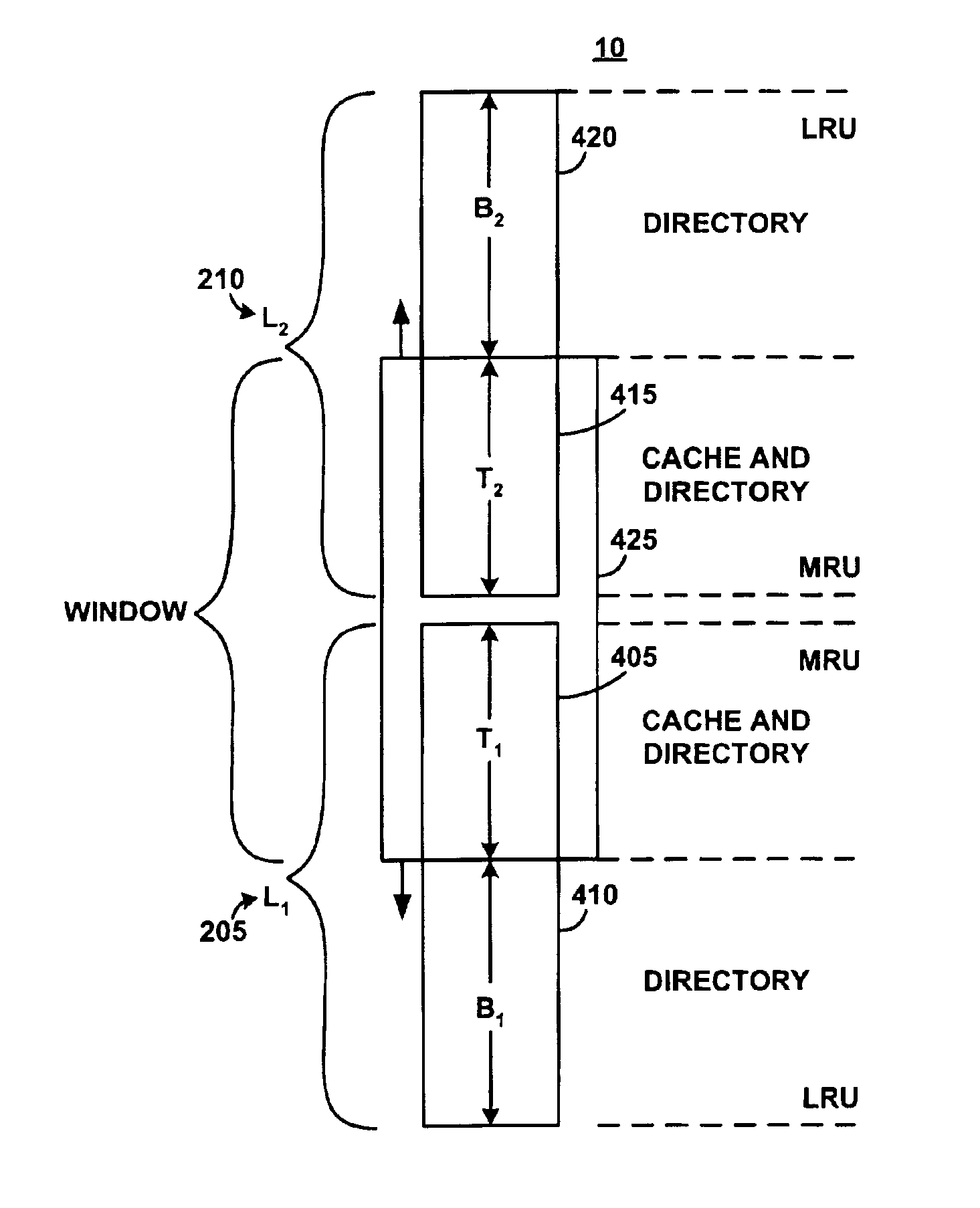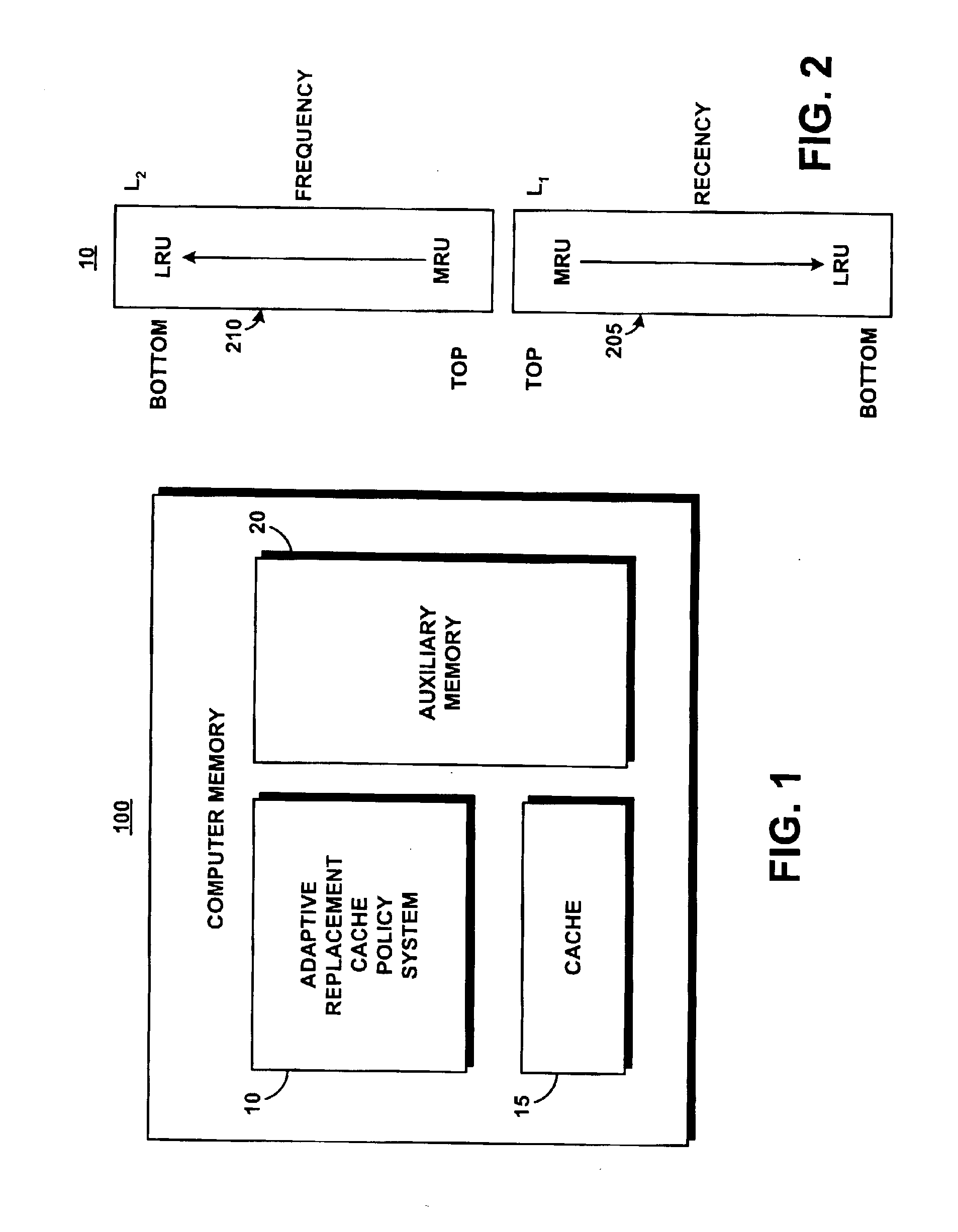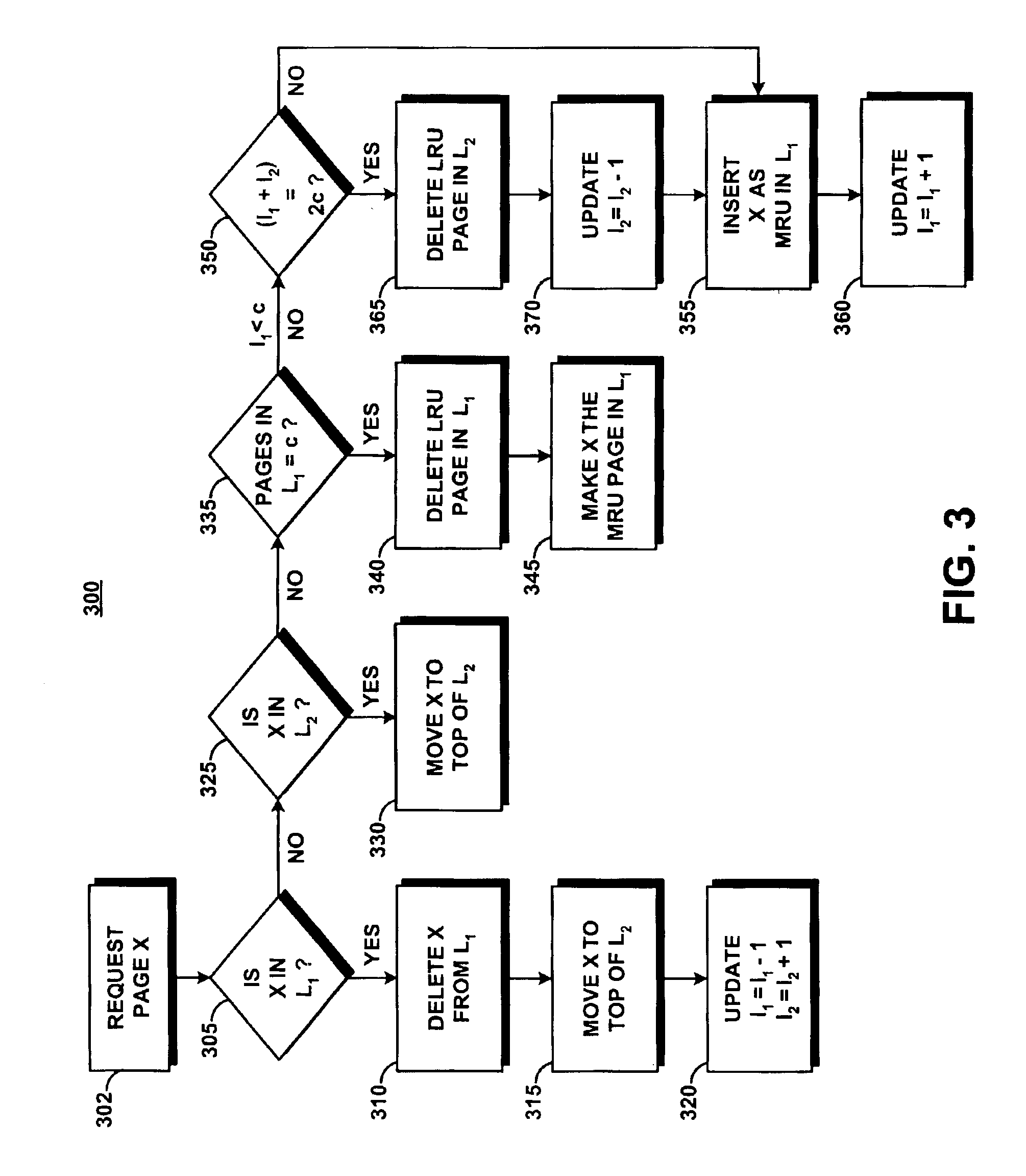System and method for implementing an adaptive replacement cache policy
a cache policy and cache technology, applied in the field of data processing systems, can solve the problems of substantial progress in caching algorithms, affecting a significant portion of the modern computation stack, and being difficult to achieve, so as to track workloads quickly and effectively, and low overhead
- Summary
- Abstract
- Description
- Claims
- Application Information
AI Technical Summary
Benefits of technology
Problems solved by technology
Method used
Image
Examples
Embodiment Construction
[0050]The following definitions and explanations provide background information pertaining to the technical field of the present invention, and are intended to facilitate the understanding of the present invention without limiting its scope:
[0051]Cache: A temporary storage area for frequently-accessed or recently-accessed data. Having certain data stored in cache speeds up the operation of the processor.
[0052]Cache Hit: A successful retrieval of data from a cache.
[0053]Cache Miss: A failure to find requested data in the cache; consequently, the slower auxiliary memory must be searched.
[0054]Empirically Universal: Performing as well as a cache system whose tunable parameter is fixed a priori to match a workload with known characteristics and to match a given cache size.
[0055]Hit Ratio: The frequency at which a page is found in the cache as opposed to finding the page in the auxiliary memory.
[0056]Miss Ratio: The frequency at which pages must be paged into the cache from the auxiliary...
PUM
 Login to View More
Login to View More Abstract
Description
Claims
Application Information
 Login to View More
Login to View More - R&D
- Intellectual Property
- Life Sciences
- Materials
- Tech Scout
- Unparalleled Data Quality
- Higher Quality Content
- 60% Fewer Hallucinations
Browse by: Latest US Patents, China's latest patents, Technical Efficacy Thesaurus, Application Domain, Technology Topic, Popular Technical Reports.
© 2025 PatSnap. All rights reserved.Legal|Privacy policy|Modern Slavery Act Transparency Statement|Sitemap|About US| Contact US: help@patsnap.com



